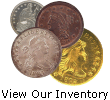Fall is a wonderful time to travel in New England, especially by car. This is the season that many thousands of ‘leaf peepers’ will descend upon sleepy towns in the northeast to be dazzled by vivid displays of the changing season. Apple orchards, cider donuts, pumpkin-fests, decorative gourds and of course the foliage are among the many wonderful features to enjoy during your stay.

Believe it or not, this isn’t Photoshopped!
Another perhaps lesser known New England attraction can be found in Cornish New Hampshire. Cornish is a pleasant 2 hours 15 minutes drive from Concord, MA (home of Northeast Numismatics) on the New Hampshire-Vermont border. Cornish is also home to the Saint Gaudens National Historic Park. Within the park grounds you will find the home of Augustus Saint Gaudens. St. Gaudens was one of the world’s preeminent sculptors of the 19th and 20th century and he made Cornish his summer residence from 1885-1897 as well as his permanent home from 1900 until his death in 1907. The grounds also feature many of his bronze sculptures, the Blow-Me-Down farm, dance hall, nature trails, monuments, statues, memorials, atriums, flower gardens, ponds and wide open fields that showcase views across the Connecticut River to the Vermont mountains.

Main House and Flower Gardens
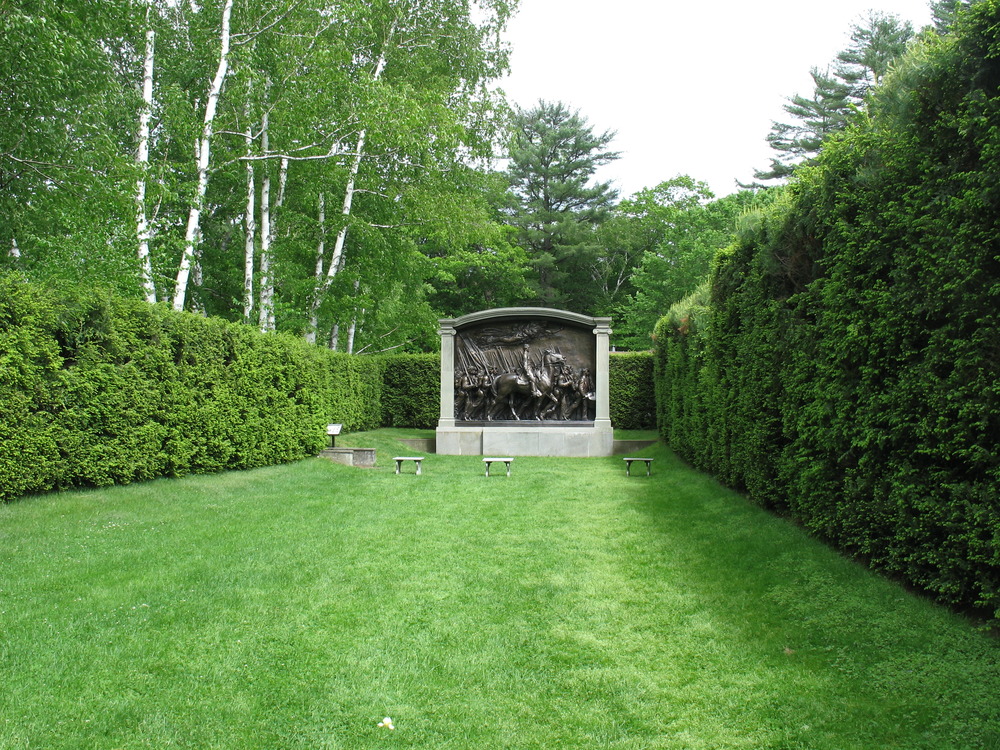
Shaw Memorial on the Bowling Green
St. Gaudens was well known for his ‘Beaux-Arts’ generation sculptures and was quite famous during his lifetime. Some of his major achievements include the Civil War Robert Gould Shaw Memorial which still stands on Boston Common, the General John Logan Memorial in Chicago’s Grant Park and a plethora of other works too voluminous to name here.
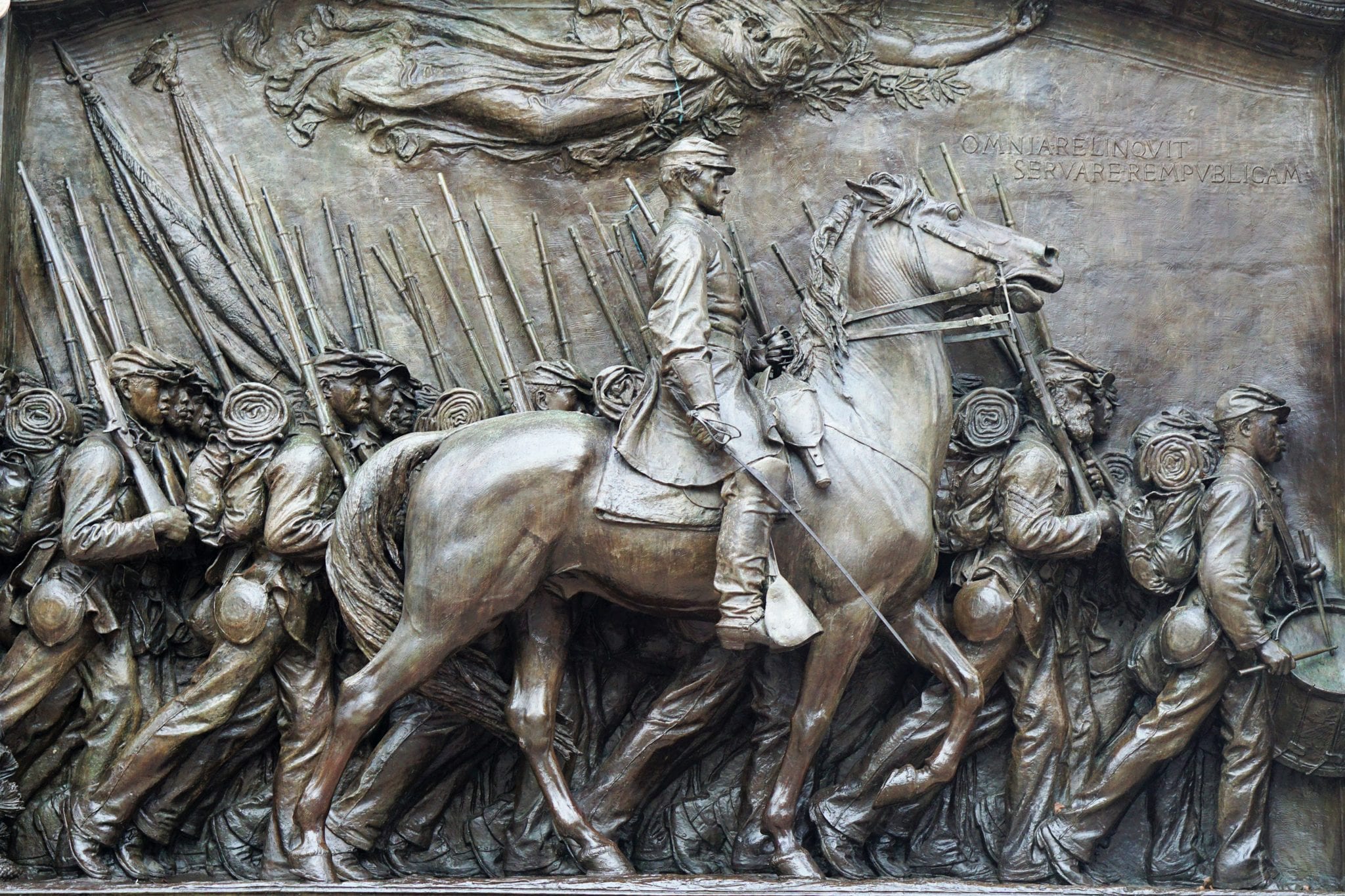
Robert Gould Shaw Memorial honoring the 54th Regiment
It is said that St. Gaudens was a good friend of Teddy Roosevelt. Roosevelt, early in his time in office, was unimpressed (to put it lightly) with the designs of US gold coins and he developed a scheme to change that. St. Gaudens was commissioned to lead the way for these advancements and was charged with designing a $20 gold piece, a $10 gold piece and a cent (which was never minted). Many consider his gold $20 Double Eagle to be the most beautiful in all of US coinage. Here is one of the finest known of his $20 designs.
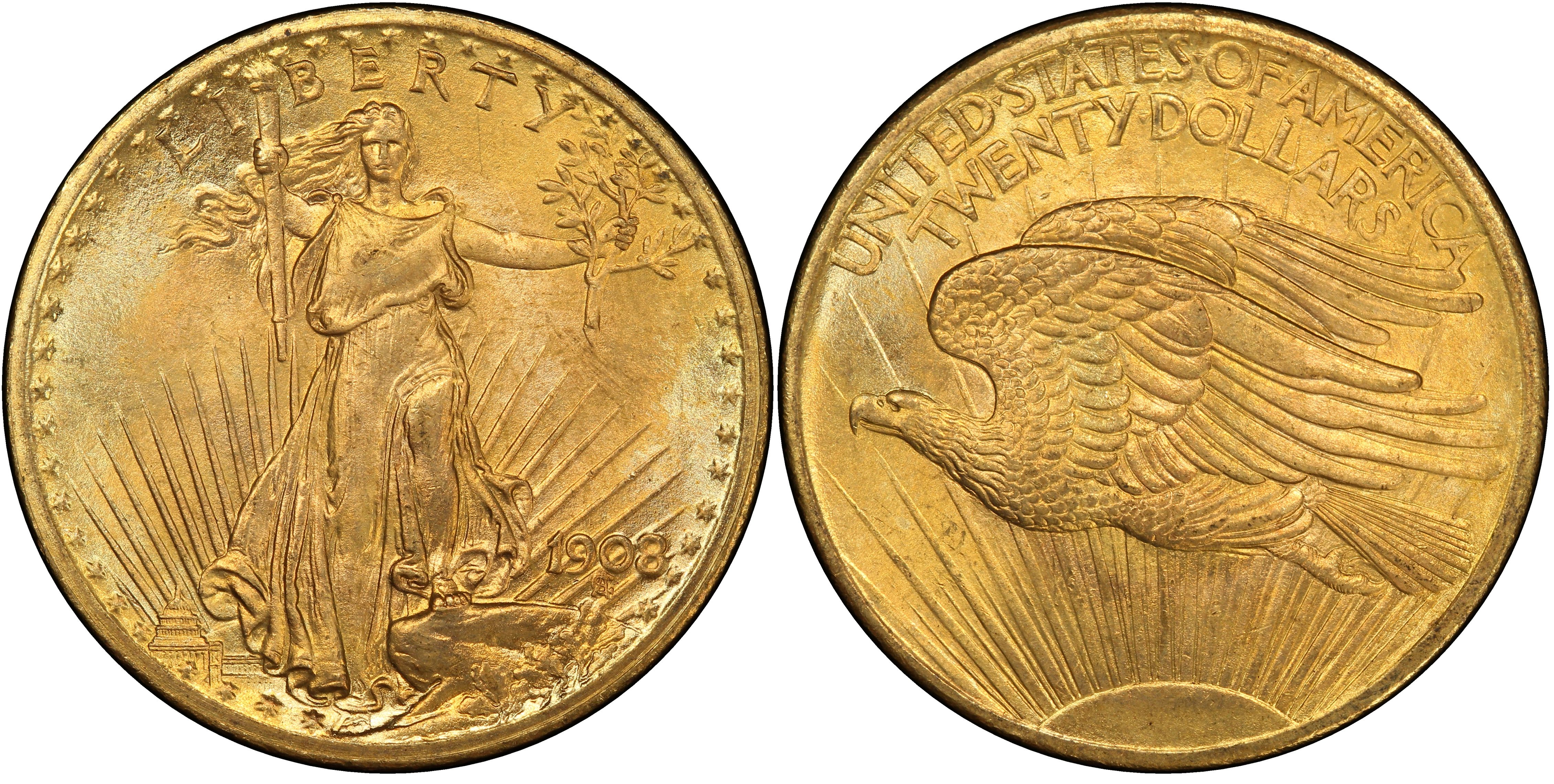
And of course the $10 Gold Indian Head
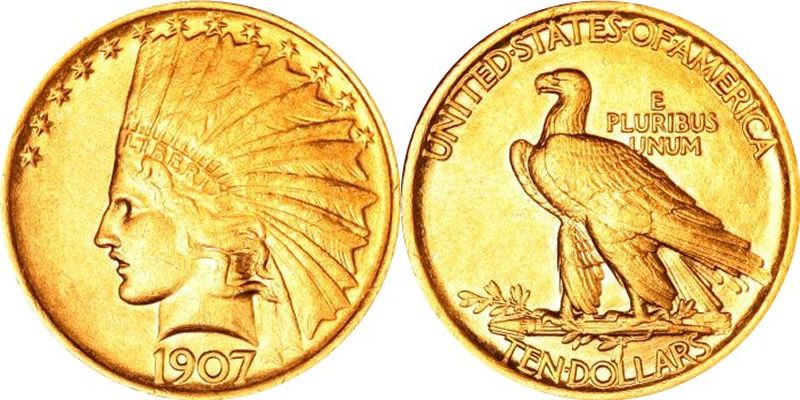
The most famous (and perhaps most controversial coin in US history) is the 1933 $20 Double Eagle of which only 13 remain and just one privately owned. This particular specimen just sold for 18.8 million dollars in June 2021.
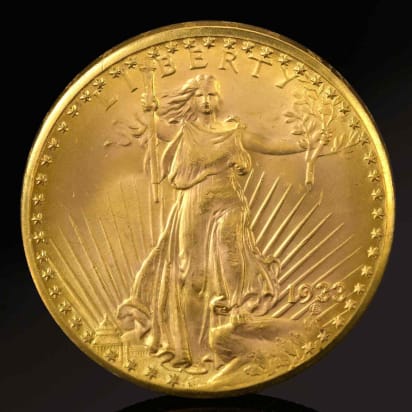
Perhaps second only to the ’33 Saint is the equally famous and certainly more attainable 1907 $20 High Relief. This important US coin comes in two varieties; the Wire Rim and Flat Rim, although they are not true varieties as the two different strikings were not planned by the mint, but rather a result of a rather tedious striking process (each coin required 5 blows by the equipment in order to bring up the design elements fully).
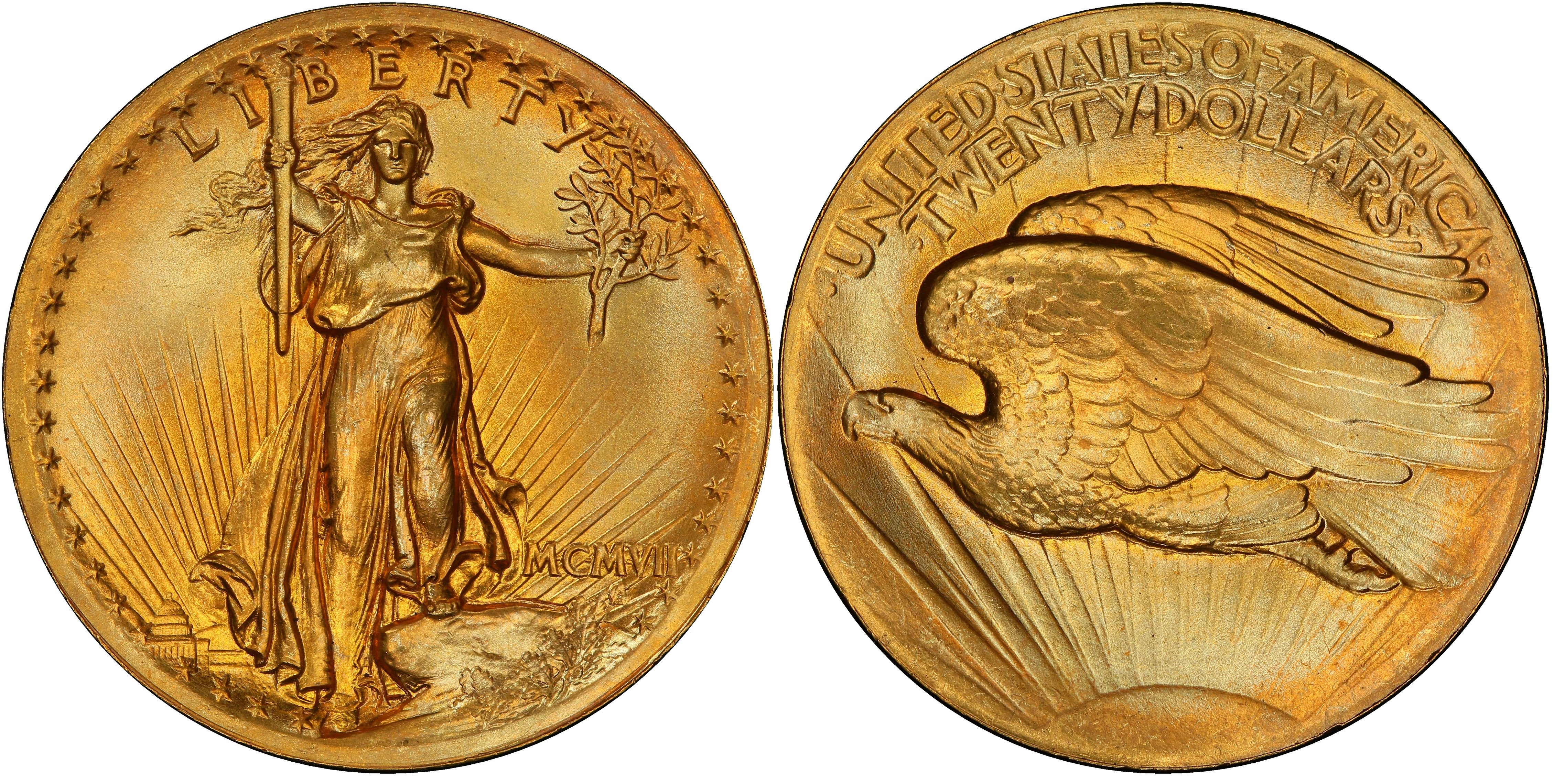
Beautiful American coins designed by a very talented American artist. If you’re ever in New England you should definitely make this one of your must-see attractions.
I'm a little late to the party here but I agree that a visit to the St Gaudens' home is well worth the visit. My wife and I visited in September of 2021. If you're coming up from the south you'll pass by the Cornish-Windsor bridge, the longest covered bridge in the United States.
Bring your pup with you and have it qualify for a "Bark Ranger" badge. All-in-all a great place to visit. And, if you stay overnight in the Lebanon area, be sure to visit the Four Aces diner for a really good breakfast.
My vote for the prettiest coin designed by St Gaudens is the $10 Indian head.
The following was written by Brian.
Feuchtwanger! It’s just fun to say and it seems that there are a few acceptable ways to pronounce the word.
Foist-fahnger (the ‘g’ is soft).
Fyooch-twinger (the ‘g’ is like the ‘g’ in ginger).
And finally, Webster’s dictionary has it broken down as foikht-vahng-uhr
Regardless of how you pronounce it (and I’ve heard some very, um, let’s say unusual attempts) it is a pretty cool, well designed and interesting coin.
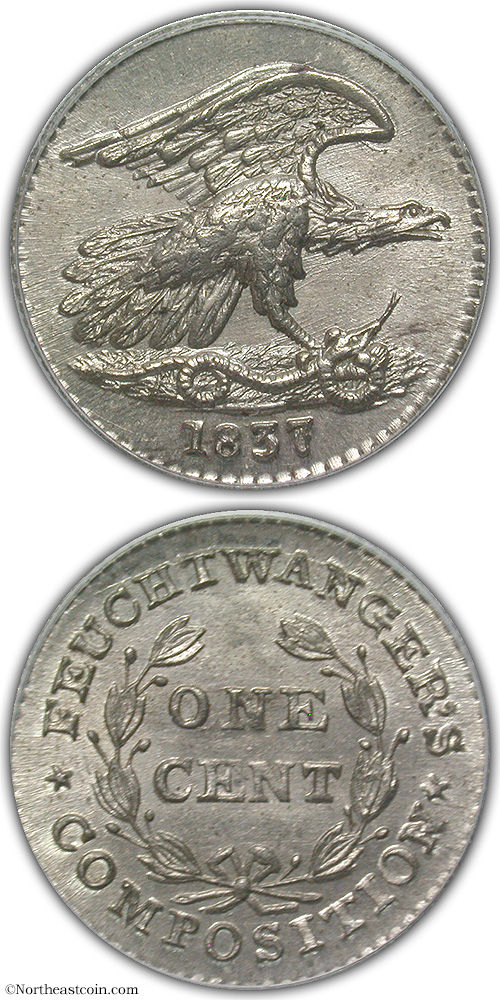
MS65 Feuchtwanger Cent
The Feuchtwanger cent, which is technically a token, was minted privately in 1837 by a Bavarian-born chemist and pharmacist named Dr. Lewis Feuchtwanger. The token coins were struck in “German Silver”, a composition of nickel, copper, and some zinc. These cents were no joke either - they were widely accepted and circulated. Like the Liberty Dollar, this was back during a time when the manufacture of such commerce was not unlawful.
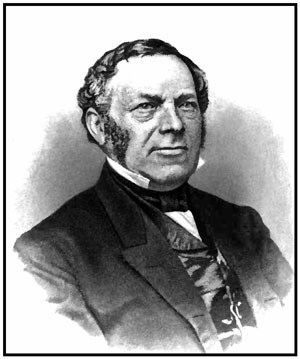
The good doctor.
‘German Silver’ had already been circulating in Europe when the doctor proposed that his coinage replace the Braided Hair Cent (which was 100% copper). And so Dr. Feuchtwanger presented his cent to the US Mint, but it was ultimately rejected due not to the design, but the metal composition. However, the year 1837 saw much uncertainty and concern with the US banking system and the Federal Reserve. So much so that many people were hoarding coins - silver coins in particular. This may account for a good number of extant coins being mint state or having light circulation.
Though the token cent is far more popular among collectors, Feuchtwanger also developed a Three Cent piece that saw heavy circulation in its heyday.
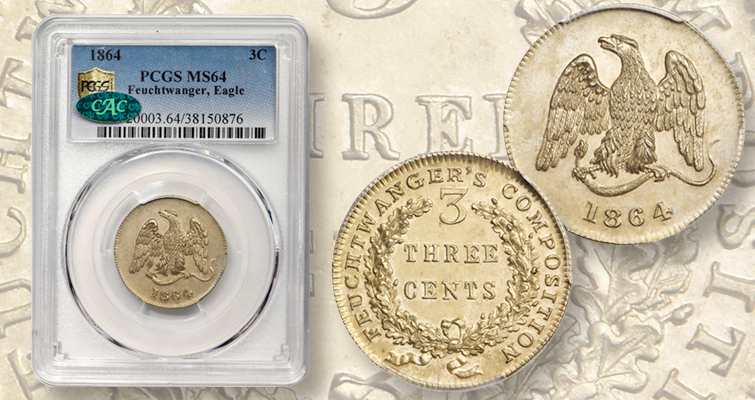
Feuchtwanger 3 Cent Piece
Such a neat coin, embedded with history, and it doesn’t cost an arm and a leg to own one in the lower grades. So let’s say it one more time…
Feuchtwanger!
The following was written by Brian.
We recently purchased a large group of coins from a longtime customer of ours and the group included about fifteen 1937-D “3 Leg” nickels, many of those of which were in high XF and upper AU grades. There is little doubt as to the immense popularity of this particular numismatic rarity; it ranks right up there with the 1909-S VDB Lincoln Cent, 1955 Doubled Die Obverse Lincoln Cent and the 1942/1 Mercury Dime.
Upon examining some of the higher end non-MS examples I noticed that many of them were close to qualifying as Mint State and without doubt would have been sliders back in the days of the Wild Wild West (pre-TPGCs).
The Buffalo Nickel series may indeed be the most difficult type to grade and an important distinction (among all coin types, really) is if the coin has seen circulation or if it is Mint State. Grading coins often begins with the obverse of the coin, but with Buffalo Nickels it should start with the reverse and in particular, the hip bone/flank area. As we know, many (if not most) issues in this series were poorly struck and because of this, some coin features are difficult to discern in terms of wear vs. weakness. For instance, you can have a well struck Mint State coin with a clearly defined and well-rounded hip bone area.
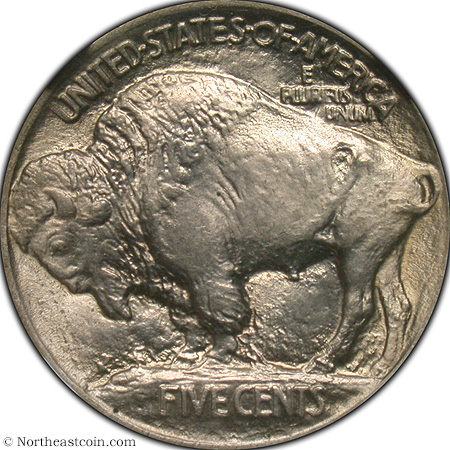
Conversely, you can have a weakly struck mint state coin with the hip bone/shoulder area not nearly as well-defined.
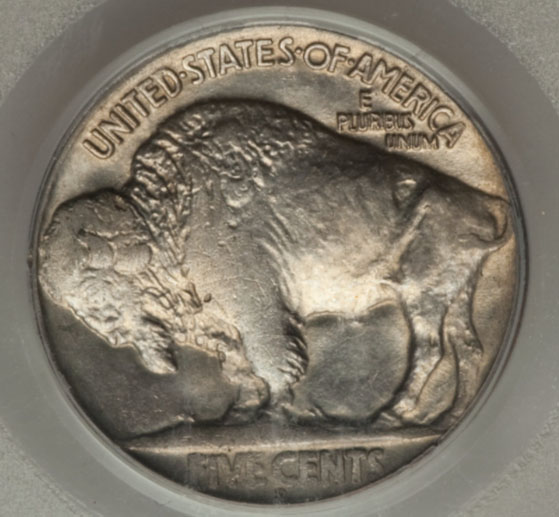
Again, neither of the above coins has wear, but due to striking you can see a big difference in the definition of the hip bones and this can really become a big factor when determining upper AU and lower Mint State examples.
When Buffalo Nickels have been circulated, the wear on the hip bone and flank underneath it is known as the “mesa affect”. In Spanish, mesa literally means table. In essence, that area flattens much like a table and it will be accompanied by a dullness in color. Here’s a sold XF example where you can clearly see the mesa affect on the hip bone and also rub on the upper shoulder area.
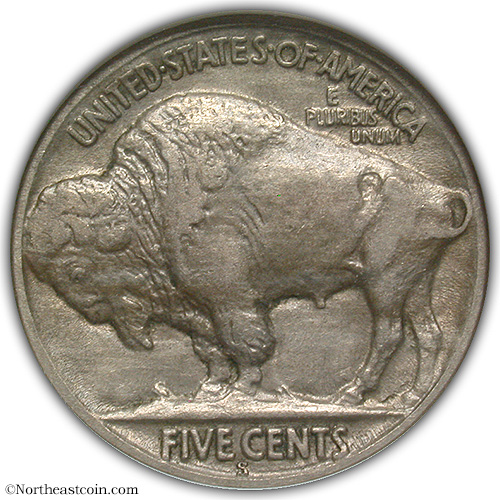
Here, however, is an example of a coin graded AU58 by NGC. Notice just the lightest hint of wear in the aforementioned areas. As Willie Shakes would say, “ay, there’s the rub.” This is another good reason to keep the loupe on hand and use it.
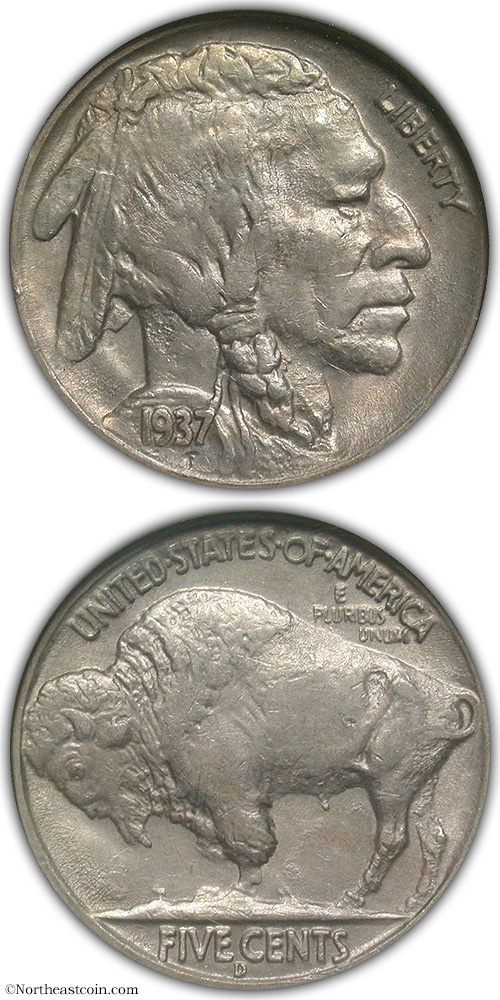
After looking at the reverse for the telltale signs of wear, be sure not to ignore the obverse as it can confirm your analyses.
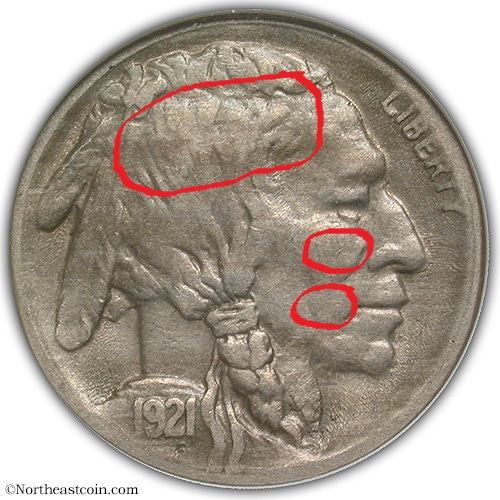
The following was posted by Brian.
Key Denson Pittman (September 19, 1872 – November 10, 1940), a democrat from the state of Nevada was elected to the US senate in 1913 and served until his death in 1940. Among his notable legislative contributions included the Pittman-Robertson Wildlife Restoration Act of 1937. He also served as president pro tempore and chairman of the powerful Foreign Relations Committee. Although many pieces of legislation bore his name, it was the Pittman Act of 1918 that is often noted as greatly affecting the numismatic hobby to this very day.
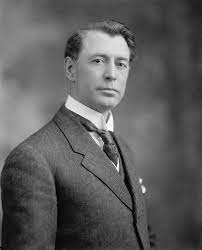
The Act authorized the conversion of “not exceeding 350,000,000 standard silver dollars into bullion and its sale or use for subsidiary silver coinage, and directed purchase of domestic silver for re-coinage of a like number of dollars”. In addition to the melting of silver dollars, under the act, an equal number of Silver Certificates would be eliminated and the certificates would be replaced by the new Federal Reserve Bank Notes. The new notes would include for the first time $1 and $2 bills. A grand total of 270,232,722 silver dollars were hence melted and converted into bullion; the majority of which was sold to Great Britain. The main reason for the act was in fact to finance the war in Europe, however American mining companies benefited greatly since every coin melted needed to be replaced one-for-one by a new silver coin. The resumption of Morgan dollar production in 1921 as well as the new Peace dollar up until 1934 would be sufficient to fill this need.

The Pittman act would of course have a great effect on the rare coin market. ‘Survival estimates’ is a term used to describe approximately how many coins are extant today. The Pittman Act although certainly the largest conversion to bullion was in no way the only time in American history that coins were melted down for one reason or another. There have been many issues along the way that suffered this fate, most often due to the American populace’s response to new (usually fractional) coinage. The Pittman Act, however, did not account for which dates and in which numbers those dates were melted. We can make guesstimates based on current population reports from the third party grading companies and researchers, but unfortunately it will forever remain an unsolved mystery as to truly which ones and how many were melted.
Further complicating matters is the fact that though over 270 million dollars would be melted, this number represented probably 50% of the total of silver dollars in vaults at the time. This means that many millions of silver dollars would eventually be released by the bag for sale – but not until the 1950’s and early 1960’s! Before that, a tough date could mean that it had been melted or it had simply not reappeared yet. For many dates, this resulted in the ‘rare yesterday, common today’ phenomenon. For example, a few New Orleans dates, most notably the 1898-O, 1903-O and 1904-O were all tough. Assumed to be casualties of the Pittman Act, these would be key dates at the time. However in 1962, bags of these dates (especially the 1903-O) began to emerge from the Treasury and thus rendering them as somewhat common.
There are of course many other dates affected and countless theories as to which ones and how many were melted. Perhaps we’ll explore that at another time, but as this is a blog and not a book, I’ll close this chapter and thank you for reading!
The following was written by Brian.
In my last post, I discussed the 1914 $2.5 Indian and we learned that the most common way to fake this coin is via die transfer. For those that did not read the last post, you are of course encouraged to do so, but in essence, the die transfer method is done by taking an original issue coin and transferring the details onto the counterfeit die, which is then tooled to hide the sins and eventually used to strike the fakes.
The 1914 $2.5 Indian had a mintage of 240,000 however, which makes the availability of a quality original to work with possible. But when the size (diameter-wise) of the coin goes up and the mintage goes down, sometimes the die transfer just isn’t the best (or easiest) way for these lowlife counterfeiters to make the fakes.
This brings us to #3 in our series; the 1893-S Morgan Dollar. Easily one of the most recognizable key dates in numismatics, the 93-S Morgan had a mintage of a scant 100,000. Many consider the 93-S Morgan dollar the true “King of the Morgans” due to the simple fact that the 1895 proof is A) a proof issue and not a business strike, and B) basically unobtainable by all but the very wealthy. Mix these factors together along with the potential for massive profits and you have a recipe for counterfeits. Indeed, much like the King of Rock and Roll - Elvis Presley, this king also has its throngs of copycats.
The counterfeit 93-S Morgan $ is a bit different than the aforementioned 1914 $2.5 in that it employs an added mintmark. 1893 Philadelphia Morgan Dollars, while a lower mintage in their own right, are most often called into service for making of a 93-S.
As usual, I’ll show you a very nice authentic 1893-S Morgan Dollar.
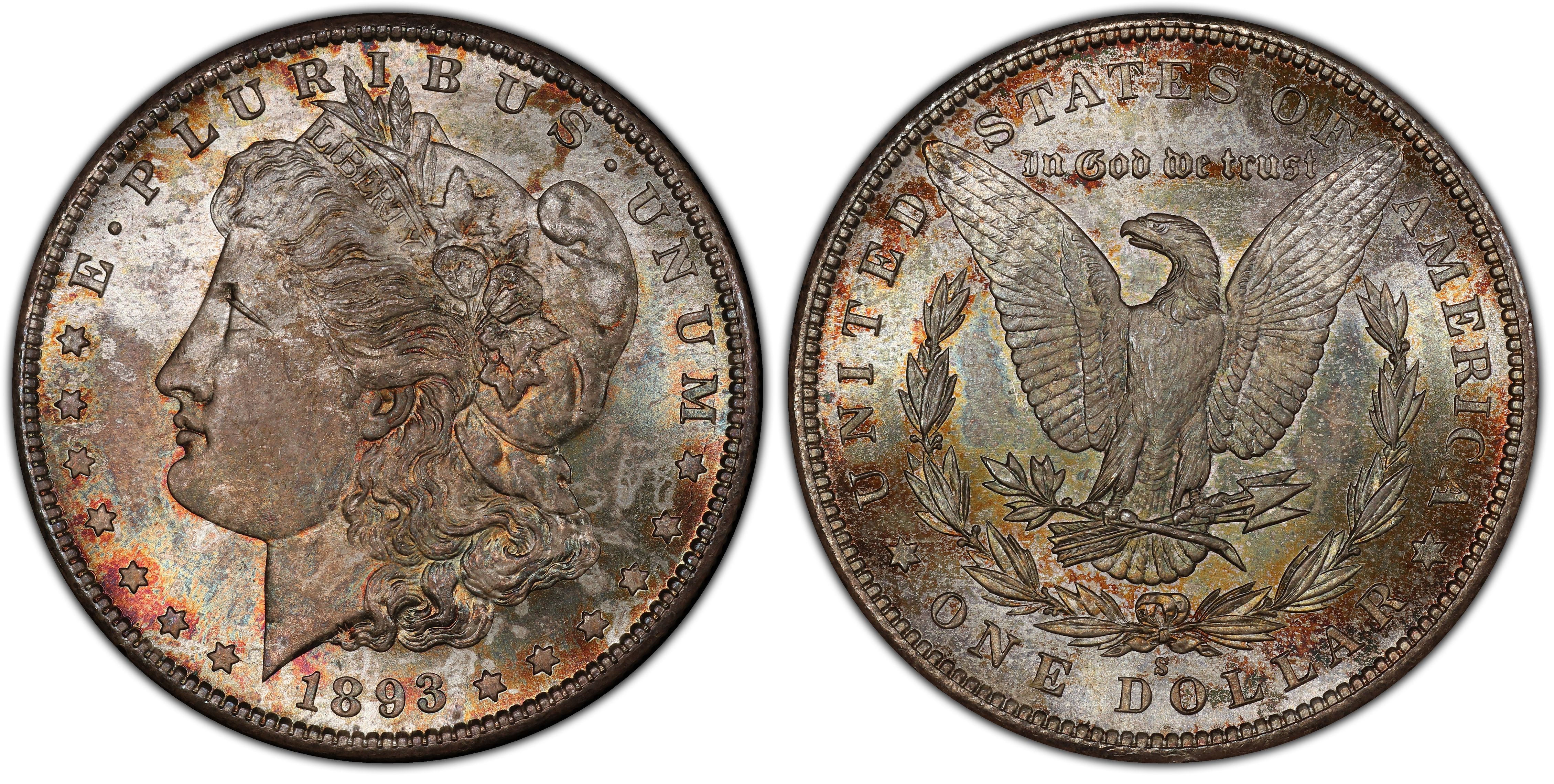
Now let’s take a bit of a closer look at the mint mark of a genuine, since that is one of the tells.
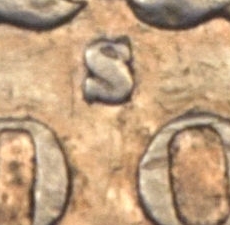
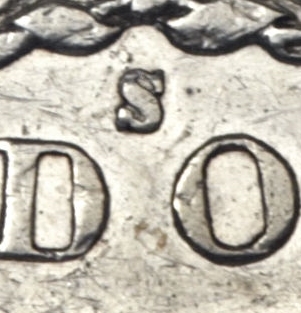
Since there were two reverse dies, you’ll see these two very slightly different mintmark orientations.
Here’s an altered mintmark
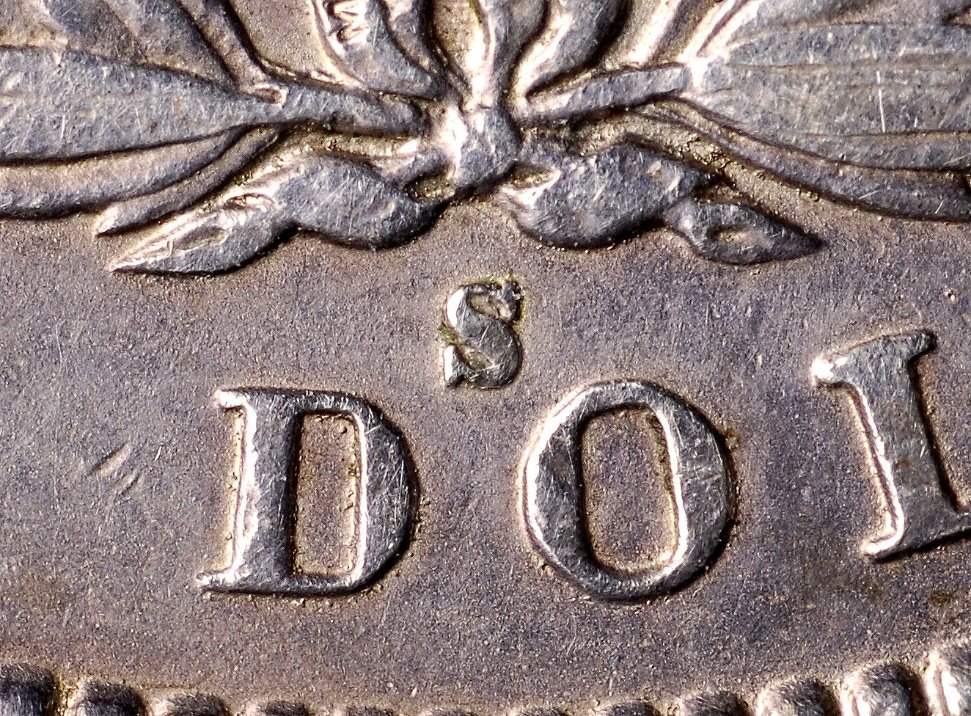
While the mintmark above itself doesn’t look horrible, you can see discoloration around the ‘S’ and that is a dead giveaway. Any time we’re moving metal, there will be some slight discoloration.
The date alone (thankfully) is not the only marker of a genuine 1893- Morgan Dollar. The “rabbit ears” in left foot of “R” in LIBERTY and the die scratch in top of the “T” in LIBERTY are seen on all but the lowest grade authentic pieces.
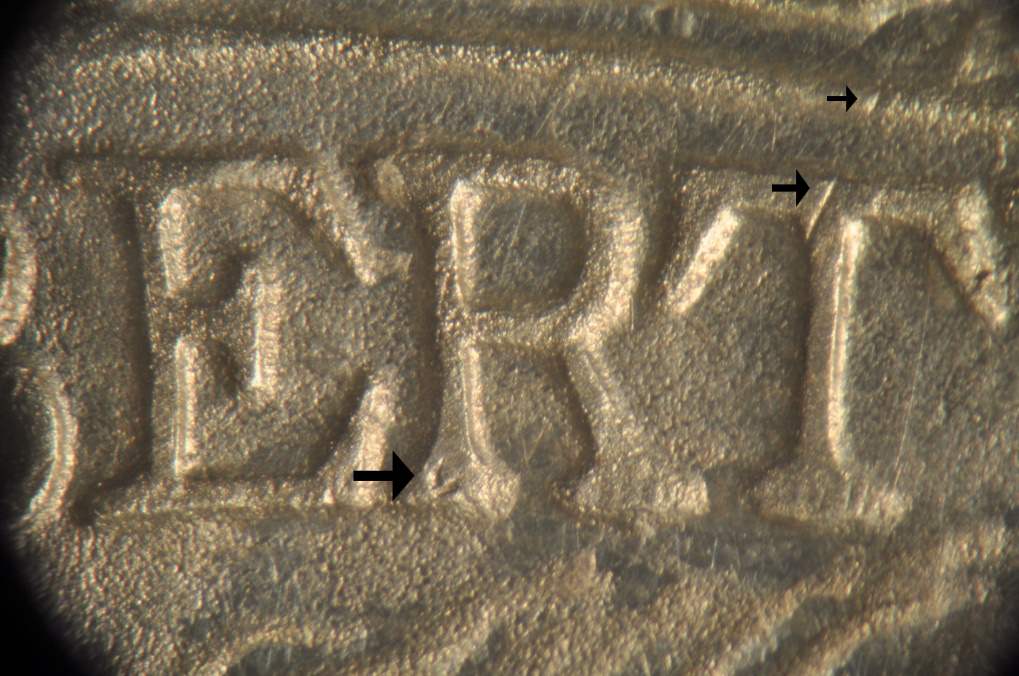
Lastly, the date is another giveaway with counterfeits. A genuine 93-S will have the ‘1’ directly over the denticle and the date is slightly tilted to the right. Here’s a good one.
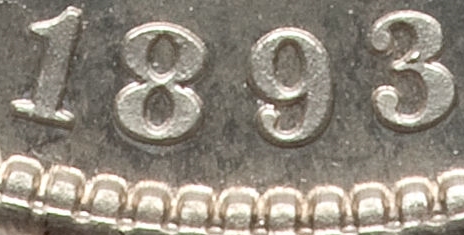
Ok, so now you’re loaded for bear! But as always, my advice is to buy only NGC or PCGS graded pieces when it comes to purchasing rare and expensive dates. Don’t get burned!
Always interesting, Brian.



